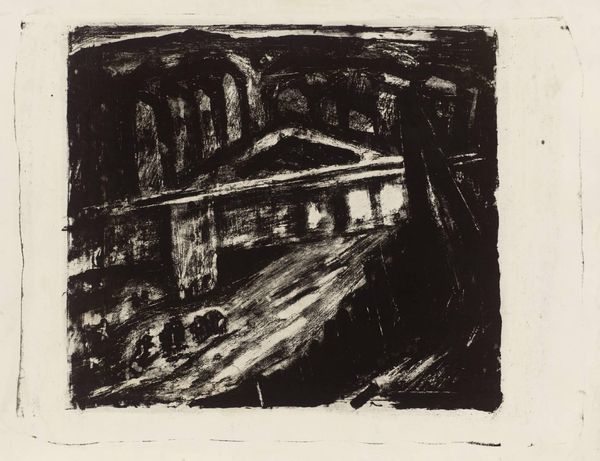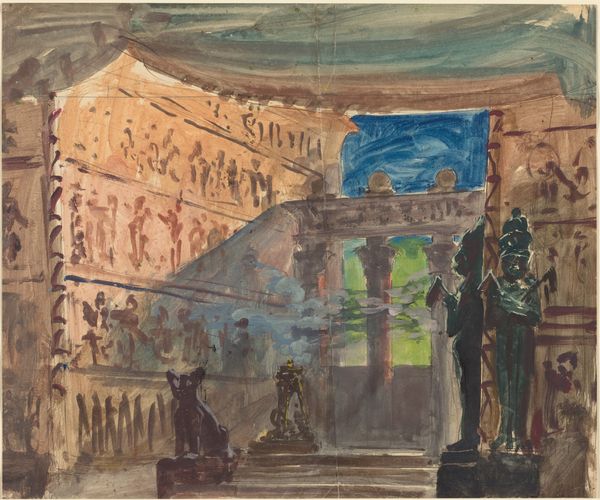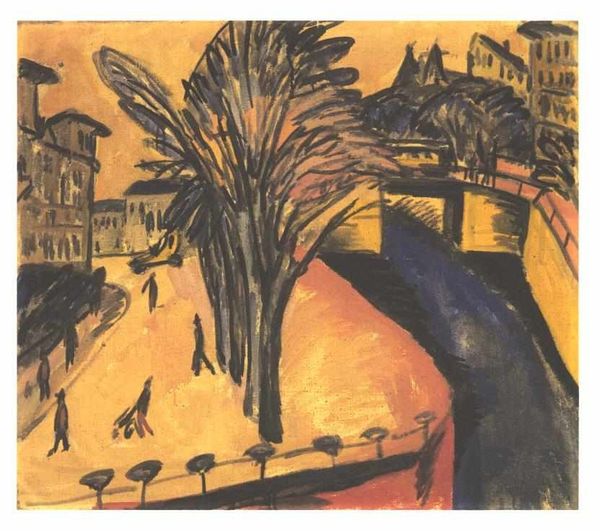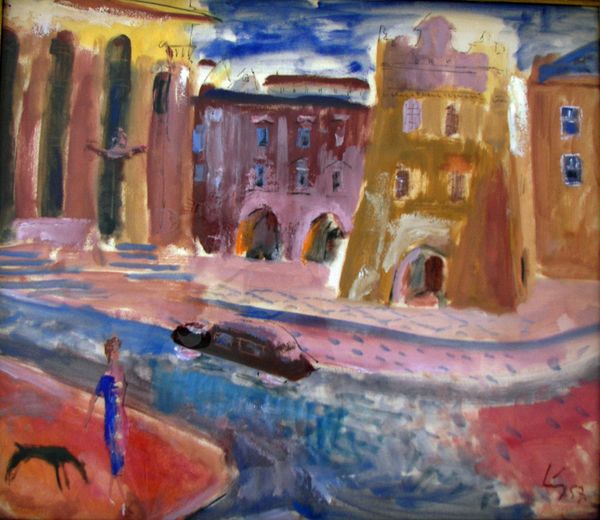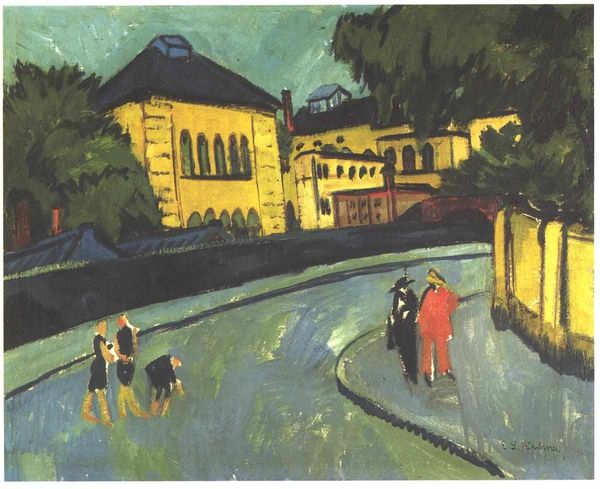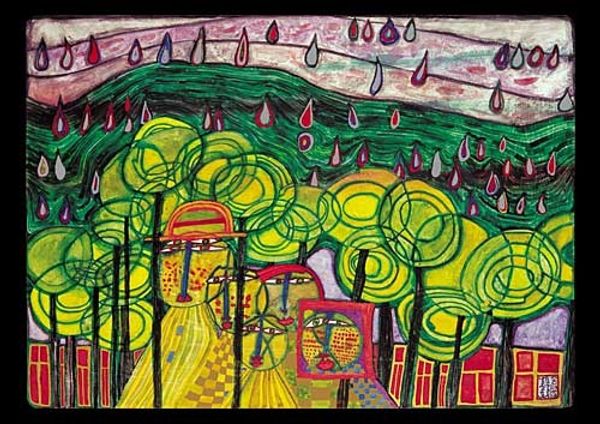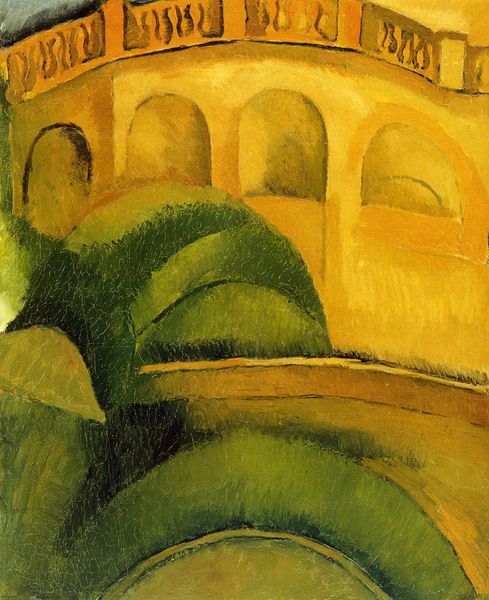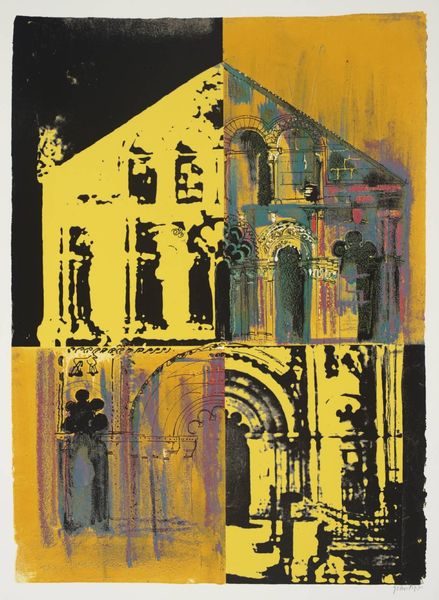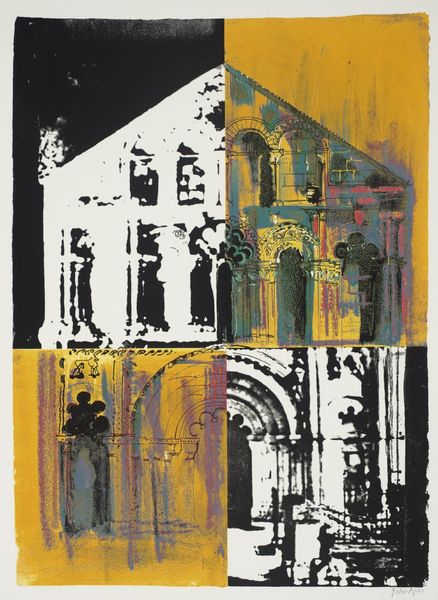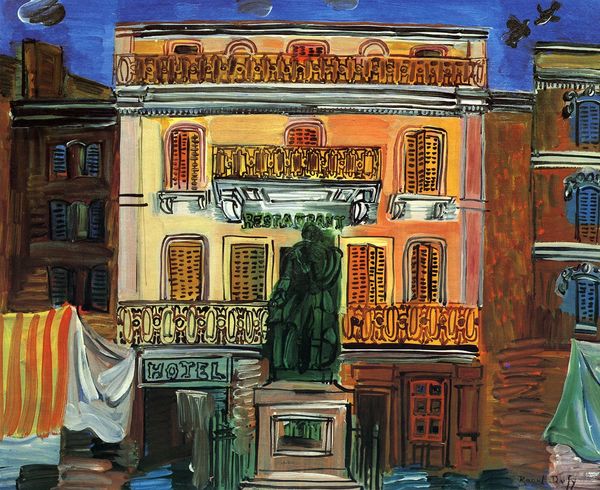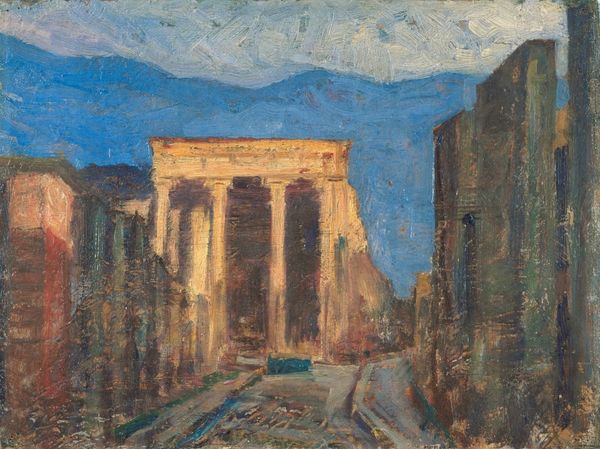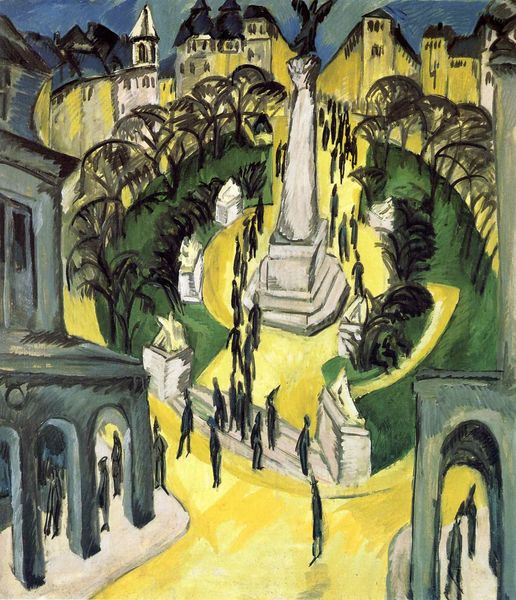
oil-paint
#
statue
#
oil-paint
#
german-expressionism
#
house
#
expressionism
#
men
#
cityscape
#
expressionist
#
building
Dimensions: 50 x 70 cm
Copyright: Public domain
Editor: This is "Brandenburg Gate in Berlin" painted by Ernst Ludwig Kirchner in 1915, using oil paint. It's quite striking! I’m intrigued by how he depicts the gate with such sharp, almost frantic brushstrokes, and also by the faceless crowds. What can you tell me about it? Curator: Well, consider the materials and the date. Oil paint, still the dominant medium, yet Kirchner handles it with an aggressive physicality, a raw immediacy that rejects academic polish. This isn't about capturing light; it’s about manufacturing a feeling, a sensation. Look at the surface texture—do you see how the visible brushwork contributes to the overall sense of unease? What would this scene feel like without that textured manipulation? Editor: I see what you mean. The roughness does amplify the tension. The faceless figures make it seem as though these aren't individuals but more… like the materials which make up the city and gate itself. Curator: Precisely. Kirchner is critiquing the urban experience through the very act of painting. Think about World War I, raging as he made this piece. What materials, what kind of labor, went into that conflict and into building this "Gate?" Aren't the figures rendered almost as shells or commodities, mirroring the dehumanization of industrial society and the war machine? What is being “produced” in this society? Editor: That’s a chilling perspective. So, it's not just a representation of Berlin, but also a commentary on the socio-political climate using the act of painting as its own form of expression… its own manufacturing process, in a way? Curator: Exactly. And by flattening perspective and exaggerating form, he's further dismantling the traditional values associated with that grand, historical monument. Kirchner makes the painting become a site of critical engagement with the very idea of national identity, power and war. Editor: Wow, I hadn't thought about it in terms of material and production. It changes everything! Curator: It forces us to reconsider how art is embedded within and responds to social, political and economic structures. We begin to read beyond the image.
Comments
No comments
Be the first to comment and join the conversation on the ultimate creative platform.

